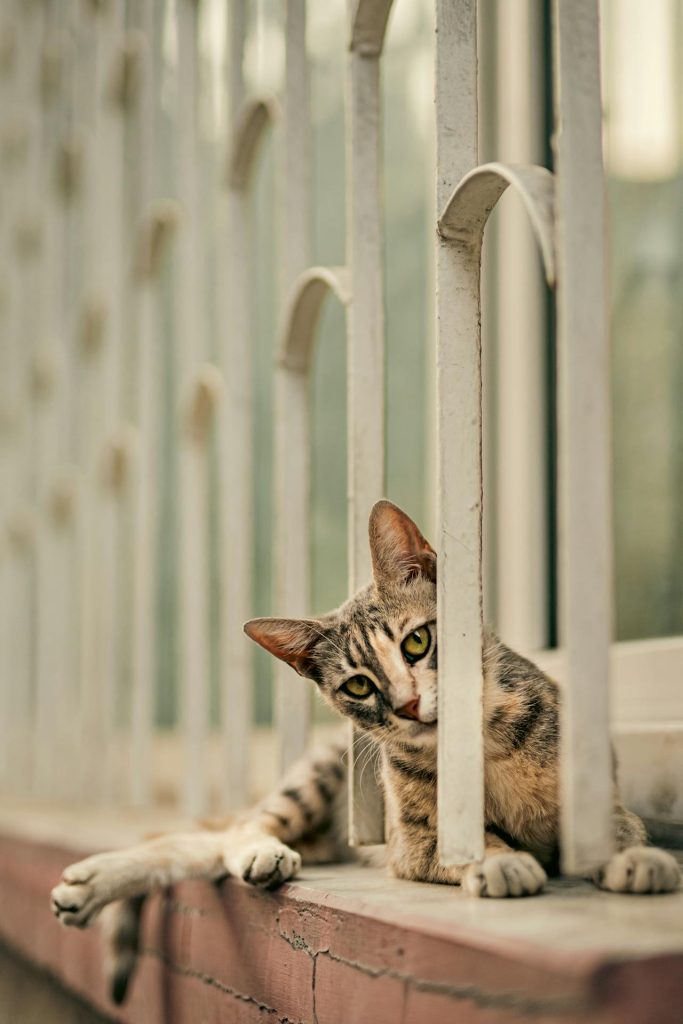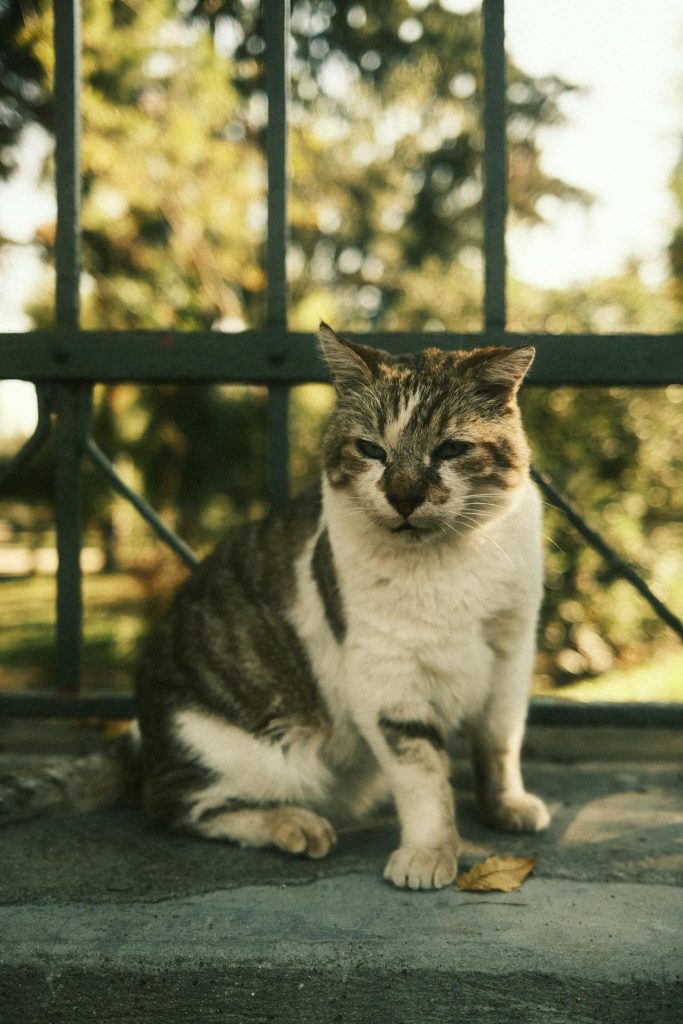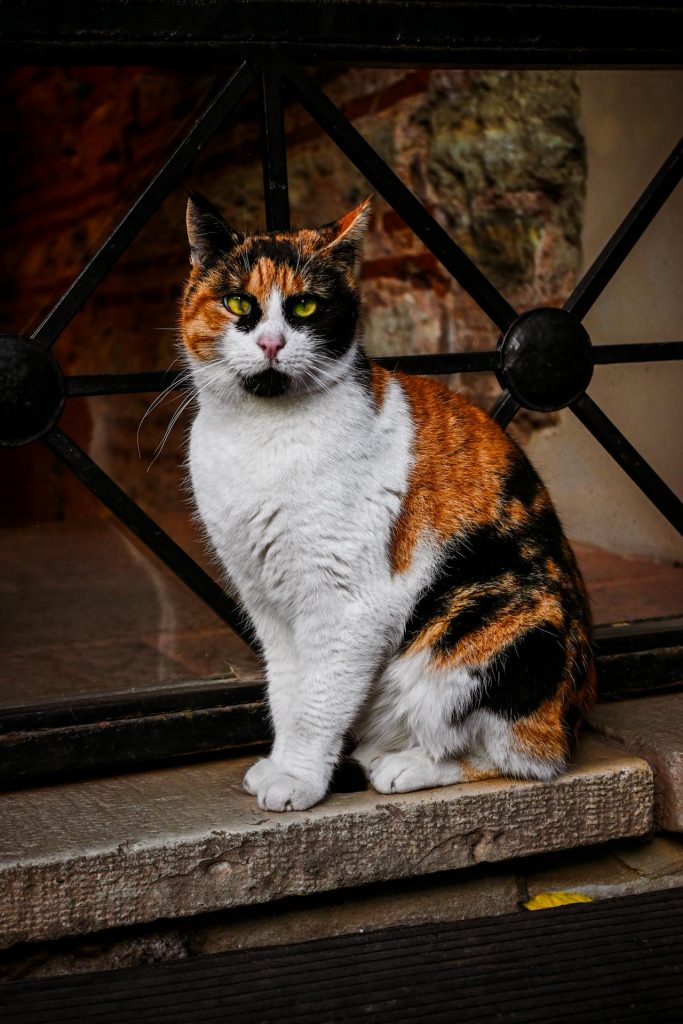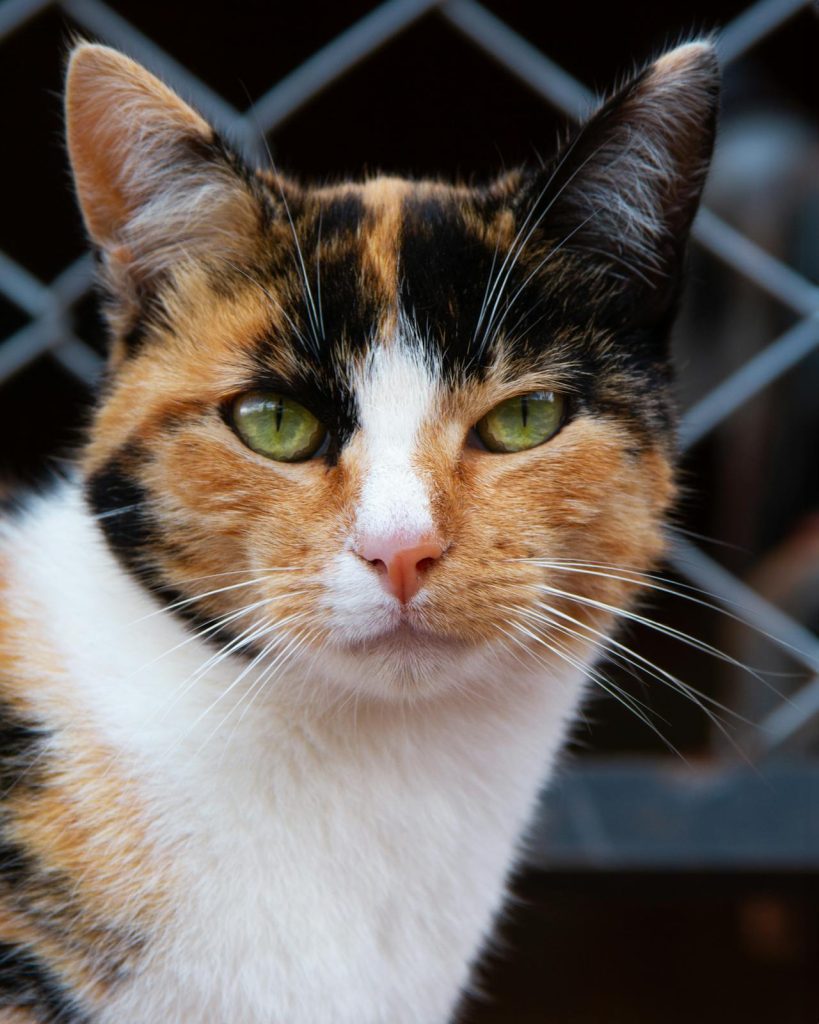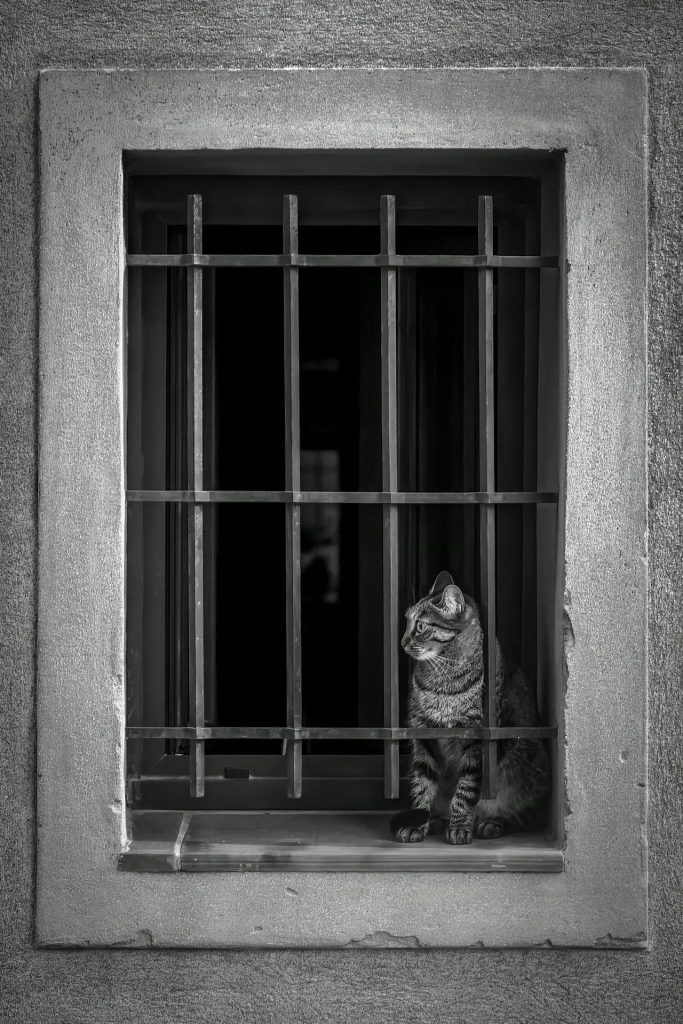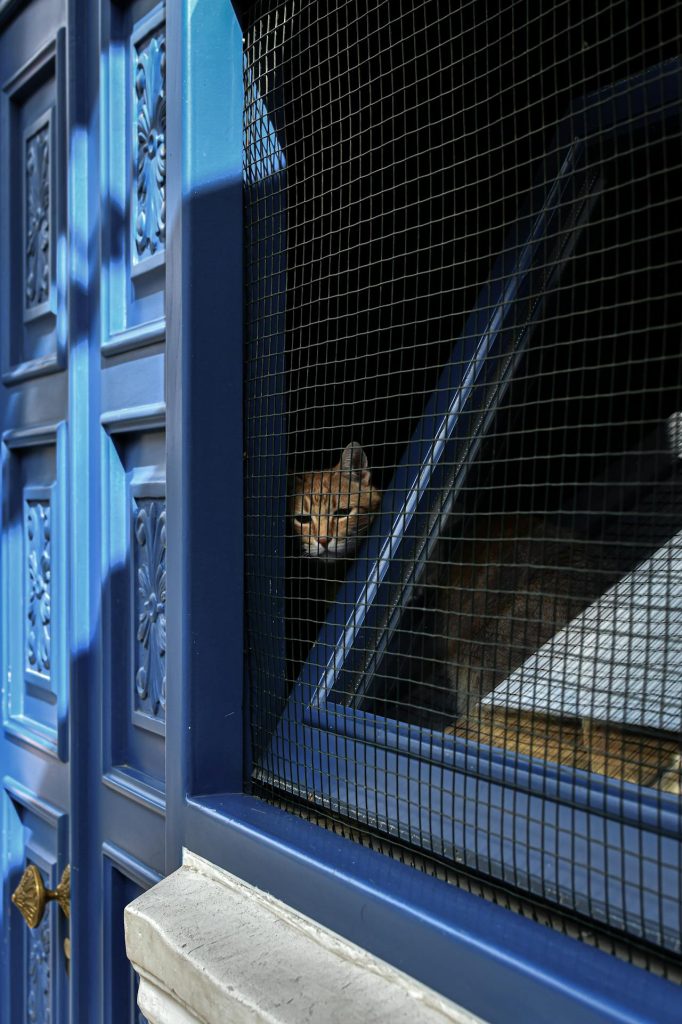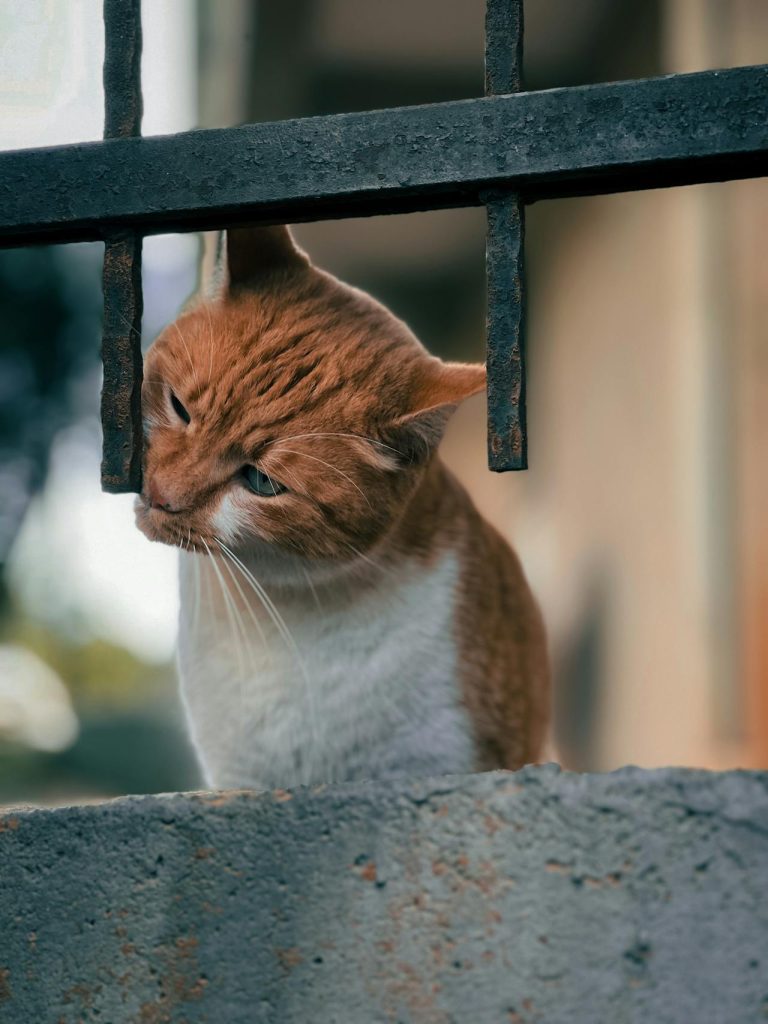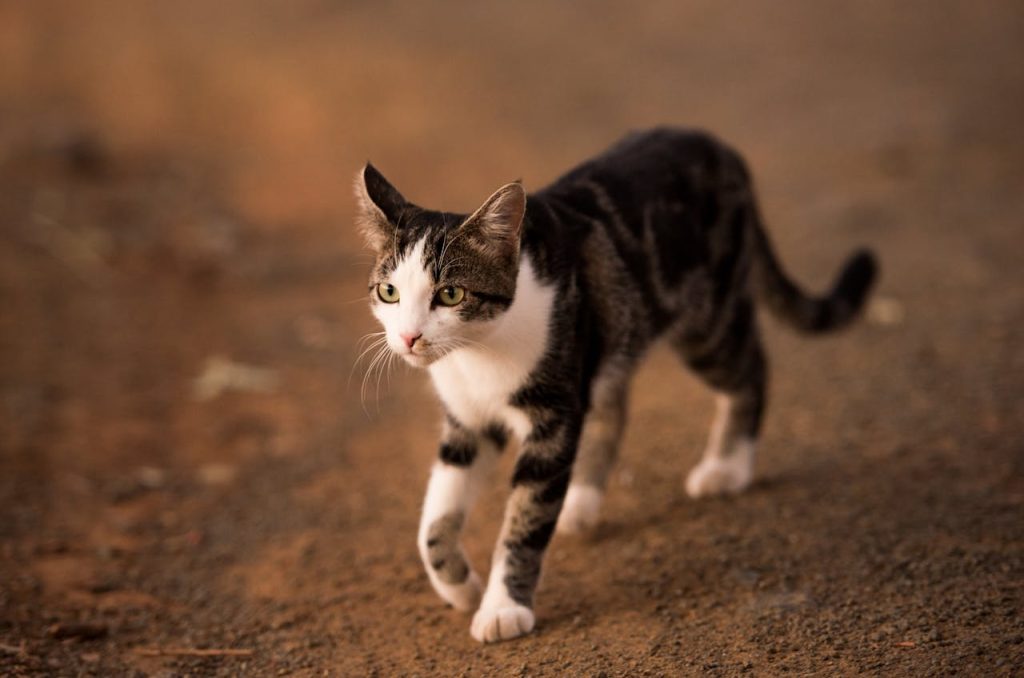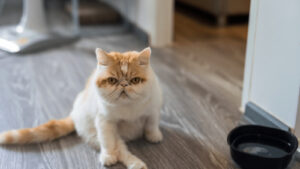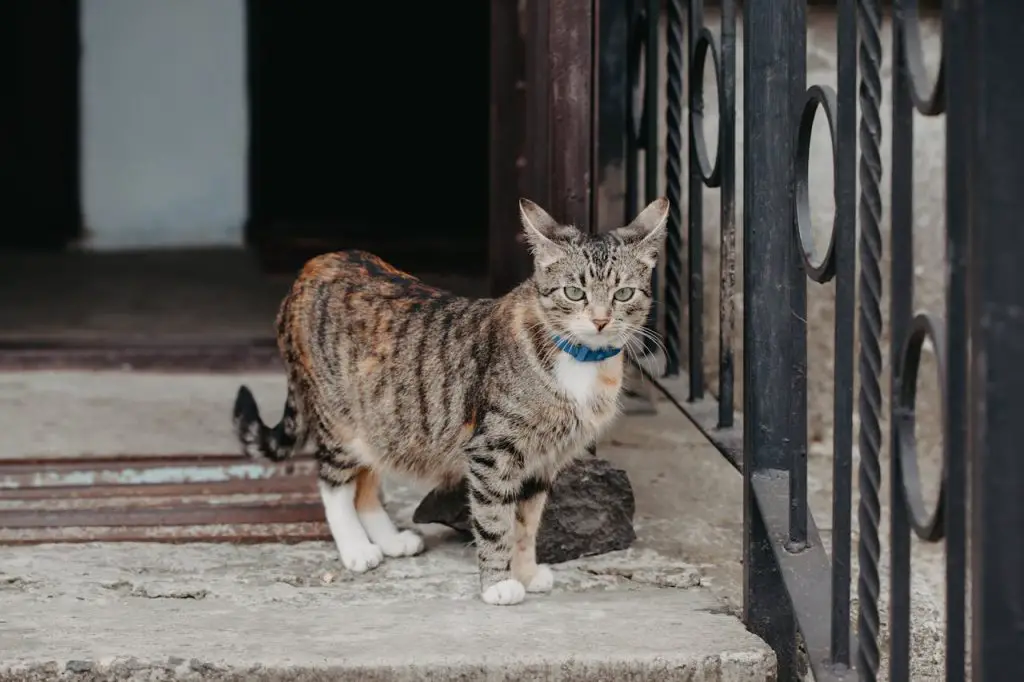
To cat-proof your fence, start by inspecting it for gaps, loose boards, and potential escape routes.
Ensure the fence is at least six feet tall.
Install extensions at a 45-degree inward angle using PVC-coated wire mesh or polypropylene netting to deter climbing.
Use roller bars or spinners for added security, attaching them with brackets for stability.
Adding dense shrubs like holly or thorny plants near the fence can also act as natural deterrents.
Regularly maintain and repair any weak spots in your fence.
This post contains affiliate links. However all the information provided on this site are my own honest opinions. See more in Disclaimer.
These techniques will effectively reduce escape attempts. By implementing them, you’ll achieve the desired security.
Table of Contents
Key Takeaways
- Install cat-proof extensions at a 45-degree inward angle to prevent climbing.
- Regularly inspect and repair fence gaps, loose boards, and weak spots.
- Use roller bars or spinners to make the fence top ungrippable.
- Add netting or mesh with openings no larger than 2 inches to the fence top.
Assess Your Current Fence
Begin by thoroughly inspecting your current fence to identify potential escape points and weaknesses. Check for gaps at the bottom, loose boards, and any sections where the fence height is insufficient.
Cats are agile climbers, so ascertain the fence is at least six feet high to deter them from jumping over it.
Evaluate the fence material as well. Wooden fences can have gaps between the boards that cats can squeeze through. Metal fences may rust over time, creating weak spots.
Vinyl fences, although durable, might develop cracks that need attention. If your fence is chain-link, be aware that cats can easily climb it.
Also See:
Focus on the areas where the fence connects to structures, such as your house or garage. These junctions can provide convenient escape routes.
Additionally, inspect for overhanging branches or nearby structures that cats can use as a launch pad to clear the fence. Use a tape measure to verify the fence height consistently along its length and a flashlight to spot any concealed gaps.
Install Cat-Proof Extensions
To effectively cat-proof your fence, you’ll need to choose suitable materials like PVC, metal, or netting for the extensions.
Make certain you use proper installation techniques, such as securing the extensions at a 45-degree inward angle to prevent climbing.
Research shows that these methods considerably reduce a cat’s ability to escape.
Choose Suitable Materials
Selecting the right materials for cat-proof extensions guarantees your fence is both secure and durable. Choosing suitable fence materials is vital for confirming cat safety and long-term effectiveness.
Here are some options to take into account:
- PVC-coated wire mesh: This material is robust and weather-resistant, making it an excellent choice for outdoor use. It’s flexible enough to create extensions that deter cats from climbing over.
- Polypropylene netting: Lightweight yet strong, polypropylene netting is UV-resistant and less likely to wear out over time. It’s also easy to install and adjust.
- Metal brackets and hinges: These components are essential for securing the extensions to your existing fence. Stainless steel is particularly durable and resistant to corrosion.
- Chicken wire: While a more economical option, chicken wire can still be effective if properly installed. Make sure it’s tightly secured to prevent cats from squeezing through any gaps.
Selecting these materials guarantees your cat-proof extensions are both effective and long-lasting. Each material has been chosen for its specific properties that aid in cat safety and fence durability.
Proper selection leads to a reliable barrier, keeping your feline friend safe and secure.
Proper Installation Techniques
Now that you have chosen the appropriate materials, guarantee you follow precise installation techniques to effectively cat-proof your fence.
Start by measuring the existing fence height to determine the length of the cat-proof extensions. The ideal extension height is 18-24 inches above the current fence.
This added height deters cats from jumping over. Next, gather your installation tools, including a drill, screws, brackets, and a measuring tape.
Secure the brackets at the top of the fence, ensuring they’re evenly spaced.
Attach the extensions to the brackets, double-checking for stability and alignment.
| Step | Description |
|---|---|
| Measure Fence Height | Use a measuring tape to record the current height. |
| Install Brackets | Evenly space brackets along the fence top. |
| Attach Extensions | Secure the extensions to the brackets with screws. |
Ensure each extension is firmly attached to prevent any gaps or weak spots. Conduct a stability test by applying gentle pressure to the extensions. If they wobble, reinforce the attachment points.
Use Roller Bars or Spinners
Installing roller bars or spinners on the top of your fence effectively prevents cats from gaining the stability they need to climb over.
The roller bar benefits lie in their ability to rotate freely when a cat tries to grab onto them, causing the cat to lose its grip. Spinner types vary, but they all serve the same purpose: to create an unstable surface that deters climbing.
When choosing and installing these devices, consider the following:
- Material: Opt for durable materials like galvanized steel or heavy-duty plastic that can withstand various weather conditions.
- Size: Verify the diameter and length of the bars or spinners match the dimensions of your fence.
- Installation: Properly secure the devices to the top of your fence using brackets or mounts to guarantee they spin freely.
- Maintenance: Regularly check for any wear and tear to maintain their effectiveness.
Roller bars are particularly effective because they rotate with minimal friction, making it hard for cats to gain a foothold.
Different spinner types, such as individual spinning cylinders or continuous roller tubes, provide varied approaches to thwarting feline climbers. By adding these deterrents, you can greatly enhance the cat-proofing of your fence.
Add Netting or Mesh
Adding netting or mesh to your fence provides an effective barrier that prevents cats from climbing over. This method guarantees cat safety by creating a physical obstacle that cats find difficult to navigate.
Mesh materials, like heavy-duty polyethylene, are durable and weather-resistant, making them suitable for long-term use.
When installing netting, attach it at a 45-degree inward angle on top of your fence. This angle makes it hard for cats to get a grip, thereby deterring their climbing attempts.
Trending in Cats:
The mesh should have small openings—no larger than 2 inches—to prevent cats from squeezing through.
Netting and mesh come in various colors and styles, allowing you to maintain fence aesthetics. For a seamless look, choose a color that matches your existing fence.
Transparent mesh options can also minimize visual impact while maximizing functionality.
Installation is straightforward: use zip ties or brackets to secure the netting to the fence. Regularly inspect the mesh for wear and tear, replacing sections as needed to maintain effectiveness.
Adding netting or mesh is a proven, reliable solution to enhance cat safety without compromising on fence aesthetics. It’s a practical approach to keeping your feline friends secure and your property looking neat.
Create a Coyote Roller
To effectively deter cats from scaling your fence, consider installing a coyote roller. This device is designed to prevent animals from gaining the necessary traction to climb over.
Coyote rollers leverage the understanding of coyote behavior, which can also apply to cats.
When an animal tries to climb the fence, the roller rotates, causing it to lose its grip and fall back down. Coyote rollers are usually installed on the top edge of a fence.
They serve as a physical barrier that relies on motion to thwart climbing attempts.
Here’s what you need to know about setting up a coyote roller:
Roller Materials: Typically made from durable aluminum or galvanized steel, guaranteeing longevity and resistance to weather conditions.
Installation: Easily mountable with brackets, requiring only basic tools for setup.
Effectiveness: Proven to deter not just cats but also other climbing animals, including raccoons and coyotes.
Maintenance: Low-maintenance design, with periodic checks to guarantee the roller spins freely.
Customization: Available in various lengths to fit different fence sizes and styles.
Utilize Landscaping Barriers
Strategic placement of dense shrubs and thorny plants can create natural barriers that deter cats from approaching and climbing your fence.
By integrating these elements into your landscape design, you utilize natural deterrents that are both effective and aesthetically pleasing.
Consider planting species such as holly, hawthorn, or rose bushes near the fence line. These plants have thorns that make it uncomfortable for cats to navigate through, reducing their attempts to breach the barrier.
Additionally, dense shrubs like boxwood can obstruct a cat’s path, making it difficult for them to reach the fence in the first place.
Research has shown that cats are less likely to traverse areas that present physical discomfort or obstruction. Using these insights, you can strategically position these plants to create a formidable barrier.
Moreover, adding gravel or mulch with sharp-edged stones around the base of the fence can further discourage cats, as they dislike walking on uneven, uncomfortable surfaces.
This combination of dense planting and ground cover enhances the effectiveness of your landscape design as a cat deterrent.
Incorporate these natural deterrents to create a secure, cat-proof environment that harmonizes with your garden’s aesthetic while providing an effective barrier.
Regular Maintenance and Inspections
Regularly inspect your fence for gaps and repair any weak spots immediately.
Evidence shows that even small gaps can become escape routes for determined cats.
Consistent maintenance guarantees the integrity of your cat-proof barrier.
Check for Gaps
Inspecting your fence for gaps is essential in maintaining a secure barrier that keeps your cat safely contained. Cats are agile and curious, often attempting to escape through the smallest openings.
To guarantee your fence design effectively thwarts these behaviors, you need to conduct regular inspections.
A methodical approach to checking for gaps involves examining the entire perimeter of the fence. Focus on areas where the fence meets the ground and any joints or connections that may have loosened over time.
Use the following checklist to guide your inspections:
- Examine the bottom edge: Cats can squeeze under the fence if there’s even a small gap.
- Inspect fence panels: Look for loose or broken panels that could provide an escape route.
- Check gate alignment: Ensure the gate closes securely without leaving any openings.
- Look for wear and tear: Weather and time can compromise the integrity of materials.
Repair Weak Spots
Consistent maintenance and timely repairs are critical to fortifying any weak spots that could compromise your fence’s effectiveness in keeping your cat safe.
Begin by conducting regular inspections to identify any damage or wear in the fence materials. Focus on areas with visible deterioration, such as rusted metal, cracked wood, or loose panels.
For wooden fences, use repair techniques like replacing damaged planks and applying a weather-resistant sealant. Confirm the new planks are securely nailed or screwed into place to prevent any gaps or weaknesses that your cat might exploit.
For metal fences, inspect for rust spots or bent sections. Use a wire brush to remove rust and apply a rust-inhibiting primer followed by a protective paint layer. If sections are considerably damaged, consider replacing them entirely.
When dealing with vinyl or composite materials, check for cracks or breaks. Repair techniques include applying a vinyl patch or replacing the damaged sections.
Keep an eye on fence posts as well; they should be firmly anchored into the ground. Regularly tighten any loose screws or bolts.
Frequently Asked Questions
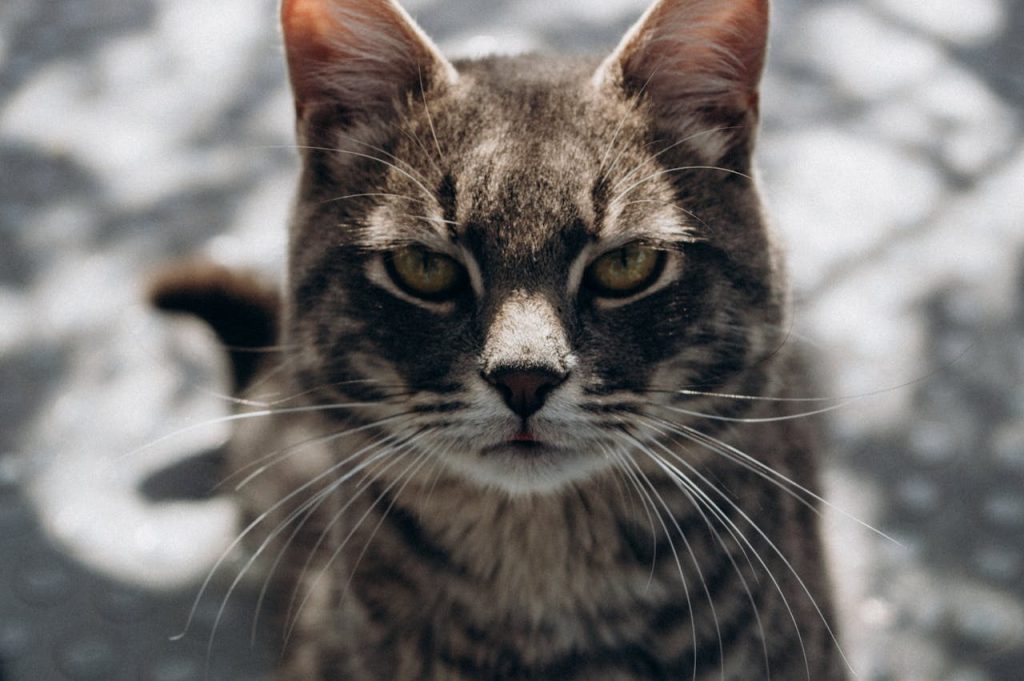
To guarantee effective escape prevention, your fence height should be at least 6 feet. Research shows that cats are less likely to jump over a fence of this height. This enhances overall containment and security.
You might think regular materials work, but specific fence materials like PVC or metal mesh are more effective. They’re durable and combined with cat deterrents like rollers or spikes, they provide a robust solution against escapes.
Yes, you can cat-proof a fence without professional help. DIY cat proofing involves fence modifications like installing DIY cat rollers or adding a lean-in barrier. Studies show these methods effectively prevent cats from climbing over fences.
To prevent your cat from digging under the fence, use digging deterrents like chicken wire or underground barriers such as buried mesh. These methods create a physical barrier, effectively stopping your cat’s attempts to dig through.
Imagine a balance beam where cat safety and wildlife impact coexist. Yes, cat-proofing a fence can be safe for other wildlife if you use humane barriers and avoid harmful chemicals. This ensures minimal disruption to local ecosystems.
Conclusion
To sum up, your cat-proof fence will be the Fort Knox of feline security. With assessments, extensions, rollers, mesh, and even a coyote roller, your Houdini cat won’t stand a chance.
Utilize strategic landscaping barriers and maintain regular inspections to keep your fortress impenetrable. Just imagine your cat’s befuddlement as they realize their escape artistry has met its match.
So, go ahead and outsmart your feline friend with these evidence-based, technically sound methods. Your backyard will finally be yours again.




